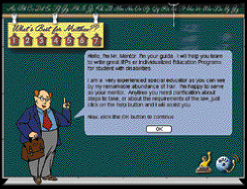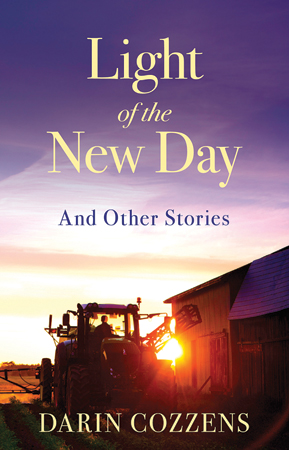By Mary Lynn Bahr
One month before school starts, your principal approaches you with unexpected news: the parents of a 9-year-old boy with autism have requested that their son Matthew, who has been attending a special school, be enrolled in a regular classroom. The principal wants to place him in your class. You are willing but apprehensive. How can you help Matthew during the year ahead? How will his presence affect your other students? Will your classroom really be the best place for this child?
Today, when children with special needs are often integrated into mainstream classrooms, many teachers face these issues. A team of BYU professors recently developed a product that may help educators meet the needs of such children. What’s Best for Matthew? is an interactive CD-ROM case study that tutors educators in the process of writing Individual Education Programs (IEPs) for students with special needs.

In this CD-ROM created at BYU, “Mr. Mentor” guides educators as they practice writing plans for students with special needs.
IEPs are used by teachers, parents, administrators, psychologists, and others who may be involved in a child’s education. Reviewed and updated by teachers every year, these personalized educational plans describe a child’s skill level and set specific short- and long-term goals for progress. Creating them requires careful assessment and a fair amount of paperwork.
“It’s a difficult thing for people to learn,” says Gordon S. Gibb, assistant professor of special education and part of the team that created What’s Best for Matthew? “The IEP is now considered a legal document, so it needs to be compliant with the requirements of the law. We wanted to provide teachers an opportunity to see the kinds of people they would talk to, the records they would look at, and the assessment results used in making an IEP–and then have a chance to practice.”
The CD-ROM guides educators through a case study about Matthew, a real 9-year-old boy with autism. While working through the program, they select people to interview and questions to ask. They view video footage not only of conversations with Matthew’s parents, teachers, and classmates, but also of Matthew demonstrating his skills and interacting with peers. Those glimpses of Matthew make the case study even better than reality, says M. Winston Egan, chair of the Department of Teacher Education, because educators using the product will have more information than most IEP writers have. “When you finish you will have a very, very clear idea as to how to do this well for children and youth,” Egan says.
Egan believes that because of its attractive design, high degree of learner control, total compatibility with current regulations, and solid educational theory, What’s Best for Matthew? is one of the best products now available to prepare educators for the important and sensitive process of writing IEPs. “When we mention it in professional meetings, special educators can’t wait to get their hands on it because IEP writing is such a prevalent part of what they do,” he says. The CD-ROM and its accompanying manual will be released by Allyn & Bacon. And, Egan adds, “Anytime anybody loads this thing, they’ll know it came from Brigham Young University.”
BYU employees who worked on the CD-ROM include Egan, Gibb, Tina T. Dyches, special education; Cregg F. Ingram, special education; Michael R. Orme, associate general counsel; S. Todd Stubbs, instructional technology; Giovanni Tata, creative works; and James R. Young, special education.
For Egan, who led the project, the process of creating What’s Best for Matthew? was as valuable as the end result. “These professors will never be the same again,” he says. “They will choose to work collaboratively as opposed to in isolation. And because we work together we produce a product that is much better than it could have been had any one of us done it alone.”









